Cookie Para Mi
On first impressions…
Strangely noticeable number of amputees in the community. Puzzled at first until we realised that the violent past of Medellin was not left in the past but would continue to linger in the communities lives forever.
On further examination…
We took a private tour with an Uber driver in attempt to see as many of the sites of Medellin in one hit. Ever since we arrived in Colombia, and especially Medellin, we had been affected by the stories of the countries past and the heartbreaking accounts of violence and destruction. The stories of families destroyed, and lives ruined at the hands of drug cartels and corrupt governments. Our driver gave personal accounts of growing up in Medellin, his parents terrified to let him walk to school because of the danger of car bombs and random attacks. The scars on his face clear evidence that life then was a stark contrast to what we were witnessing today. However, as he explained, it seemed in the past few years, Columbia had begun to transform into a place of optimism and hope. Communa 13, our first stop, is one of Medellin’s most famous transformations.
Communa 13 is an over-populated, low socio-economic area with thousands of brick and cement homes stacked almost on top of one another. In the past it was a pivotal center for guerrilla and gang activity as its location sits directly in the path of the main highway, providing easy transportation of guns, drugs, and money. As the area was inhabited by groups loyal to Pablo Escobar, our guide alleged that in the past, a visit to Communa 13 as a foreigner would have meant certain death.
After Escobar’s death in 1993, drug cartels continued to rule the communa until 2002 when the Colombian military carried out a controversial strike to overthrow the rebel groups. Nine people died, and hundreds were injured in the siege, but the fighting stopped. To voice their fears and pain, the communa residents began creating street art. Striking wall art around the neighborhood was created to depict scenes with white rags raised for peace and solidarity.
With the overhaul of governments, Communa 13 has been transformed. Six, sheltered escalators have been installed up the mountain to aid the residents in accessing their local shops and community. The street art continues to be a source of expression and the houses are now brightly coloured. The people of Medellin are so proud of this communa and honored that they are slowly moving forward, in an extremely positive direction.
The following days in Medellin consisted of day trips. First off Botero Plaza and museum where his famous oversized statues and artwork can be witnessed. A visit to ‘The Museo de Memories’ was yet another reality check where stories of murdered and displaced people are exposed. Pictures of missing adults and children, families left separated and lives destroyed forever.
A day away from learning about the horror, took us up the cable car, over the mountain ridge into the lush national park on the other side, Park Avi. Amid the mountain tops were nature walks and even a food market! We found beautiful scenery, delicious fig cake and again had a surprise reunion with our friends from the San Blas, Lisa and Agostino.
Then there was the day at the soccer… quite the experience, probably amplified by the fact that the two teams playing were the rival Medellin teams, it was the local derby. We went to the stadium the day before to purchase our tickets and were warned by multiple people not to sit behind either end of goals as there was real danger to be found amongst the crowd! So arriving with what we thought was plenty of time the following day, we were directed to a line that was legitimately around 1 KILOMETER long, winding around the stadium and onto the streets below. We were surrounding by street vendors selling team paraphernalia and heavily armed and uniformed riot police! Not the surrounds we are used to at the MCG. After we had been waiting for around 45 minutes, the tame line quickly turned when, still hundreds of meters from the gate, we heard the opening siren sound. The crowd lost it. People began running, surging towards the stadium. The riot police stepped quickly into action and had their giant horses edging the crowd back and their batons swiftly reaching those who refused. We managed to find an island where a tree was planted and got to watch the madness from above with relative safety. At that point we had resided to the fact that there was no way we were going to get inside to watch this match. However, after much negotiation of the crowd, police and barricades, we surprisingly made it to our seats and were absolutely blown away by what was laid out before us. There was a constant drone of the fans, bellowing at both the players and opposing fans. Both sides had their fully fledged, resident brass and drum bands set up on the second level, which meant there was an incessant, pounding drum beat that failed to cease, for the entire game. The fans were revelling in hurling abuse and throwing streamers (and anything else they could find) at the players. One player even lucky enough to cop an object to the head when he was lining up for a free kick. Luckily for us the game ended in a ‘nil all’ tie. Who knows what sort of madness may have erupted otherwise!
Lastly the food in Columbia was something we were super keen to try and sadly we were bitterly disappointed. The traditional Paisa lunch was not exactly what I had in mind for a national dish- ground beef, pork knuckle, rice, plantain, beans. Fortunately, their traditional chicken soup made up for the Paisa’s downfalls, food for the soul.
In the end…
Medellin is progressive, and its people ooze pride. I will be so interested so witness what its future holds, onwards and upwards!
elspeth.lucas
54 chapters
Moving forward...
November 14, 2017
|
Medellin, Columbia
On first impressions…
Strangely noticeable number of amputees in the community. Puzzled at first until we realised that the violent past of Medellin was not left in the past but would continue to linger in the communities lives forever.
On further examination…
We took a private tour with an Uber driver in attempt to see as many of the sites of Medellin in one hit. Ever since we arrived in Colombia, and especially Medellin, we had been affected by the stories of the countries past and the heartbreaking accounts of violence and destruction. The stories of families destroyed, and lives ruined at the hands of drug cartels and corrupt governments. Our driver gave personal accounts of growing up in Medellin, his parents terrified to let him walk to school because of the danger of car bombs and random attacks. The scars on his face clear evidence that life then was a stark contrast to what we were witnessing today. However, as he explained, it seemed in the past few years, Columbia had begun to transform into a place of optimism and hope. Communa 13, our first stop, is one of Medellin’s most famous transformations.
Communa 13 is an over-populated, low socio-economic area with thousands of brick and cement homes stacked almost on top of one another. In the past it was a pivotal center for guerrilla and gang activity as its location sits directly in the path of the main highway, providing easy transportation of guns, drugs, and money. As the area was inhabited by groups loyal to Pablo Escobar, our guide alleged that in the past, a visit to Communa 13 as a foreigner would have meant certain death.
After Escobar’s death in 1993, drug cartels continued to rule the communa until 2002 when the Colombian military carried out a controversial strike to overthrow the rebel groups. Nine people died, and hundreds were injured in the siege, but the fighting stopped. To voice their fears and pain, the communa residents began creating street art. Striking wall art around the neighborhood was created to depict scenes with white rags raised for peace and solidarity.
With the overhaul of governments, Communa 13 has been transformed. Six, sheltered escalators have been installed up the mountain to aid the residents in accessing their local shops and community. The street art continues to be a source of expression and the houses are now brightly coloured. The people of Medellin are so proud of this communa and honored that they are slowly moving forward, in an extremely positive direction.
The following days in Medellin consisted of day trips. First off Botero Plaza and museum where his famous oversized statues and artwork can be witnessed. A visit to ‘The Museo de Memories’ was yet another reality check where stories of murdered and displaced people are exposed. Pictures of missing adults and children, families left separated and lives destroyed forever.
A day away from learning about the horror, took us up the cable car, over the mountain ridge into the lush national park on the other side, Park Avi. Amid the mountain tops were nature walks and even a food market! We found beautiful scenery, delicious fig cake and again had a surprise reunion with our friends from the San Blas, Lisa and Agostino.
Then there was the day at the soccer… quite the experience, probably amplified by the fact that the two teams playing were the rival Medellin teams, it was the local derby. We went to the stadium the day before to purchase our tickets and were warned by multiple people not to sit behind either end of goals as there was real danger to be found amongst the crowd! So arriving with what we thought was plenty of time the following day, we were directed to a line that was legitimately around 1 KILOMETER long, winding around the stadium and onto the streets below. We were surrounding by street vendors selling team paraphernalia and heavily armed and uniformed riot police! Not the surrounds we are used to at the MCG. After we had been waiting for around 45 minutes, the tame line quickly turned when, still hundreds of meters from the gate, we heard the opening siren sound. The crowd lost it. People began running, surging towards the stadium. The riot police stepped quickly into action and had their giant horses edging the crowd back and their batons swiftly reaching those who refused. We managed to find an island where a tree was planted and got to watch the madness from above with relative safety. At that point we had resided to the fact that there was no way we were going to get inside to watch this match. However, after much negotiation of the crowd, police and barricades, we surprisingly made it to our seats and were absolutely blown away by what was laid out before us. There was a constant drone of the fans, bellowing at both the players and opposing fans. Both sides had their fully fledged, resident brass and drum bands set up on the second level, which meant there was an incessant, pounding drum beat that failed to cease, for the entire game. The fans were revelling in hurling abuse and throwing streamers (and anything else they could find) at the players. One player even lucky enough to cop an object to the head when he was lining up for a free kick. Luckily for us the game ended in a ‘nil all’ tie. Who knows what sort of madness may have erupted otherwise!
Lastly the food in Columbia was something we were super keen to try and sadly we were bitterly disappointed. The traditional Paisa lunch was not exactly what I had in mind for a national dish- ground beef, pork knuckle, rice, plantain, beans. Fortunately, their traditional chicken soup made up for the Paisa’s downfalls, food for the soul.
In the end…
Medellin is progressive, and its people ooze pride. I will be so interested so witness what its future holds, onwards and upwards!
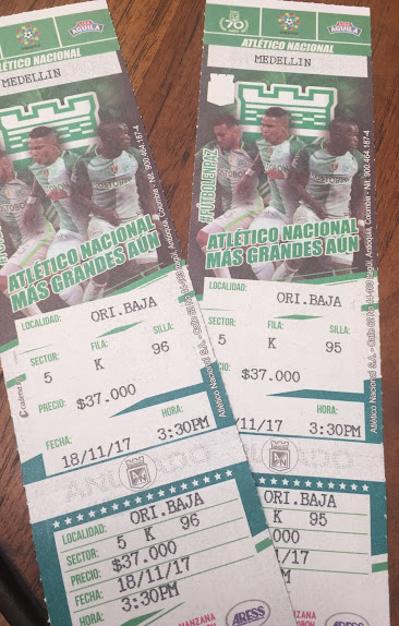
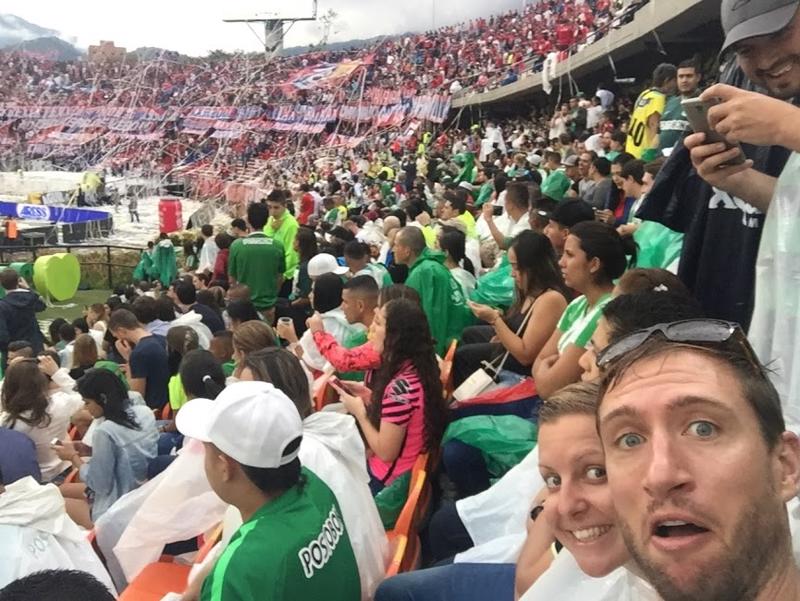
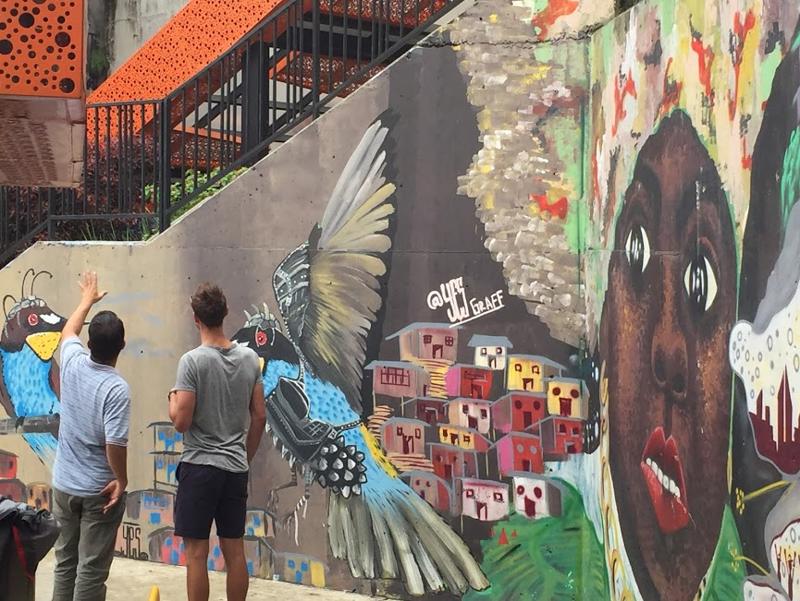
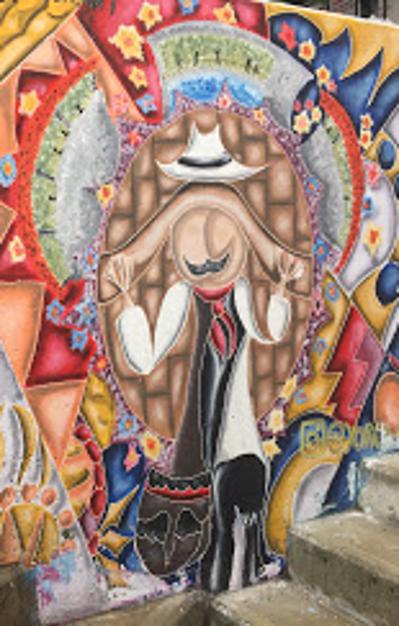
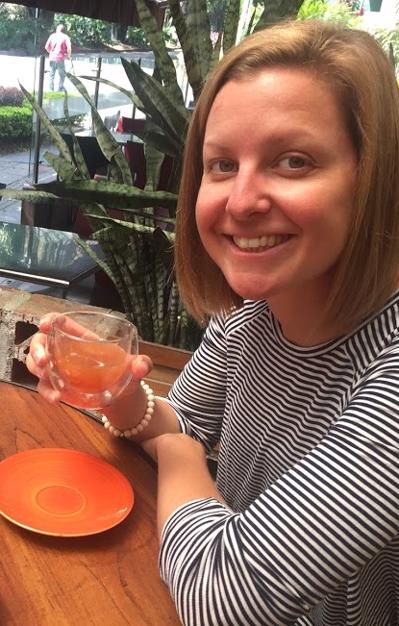

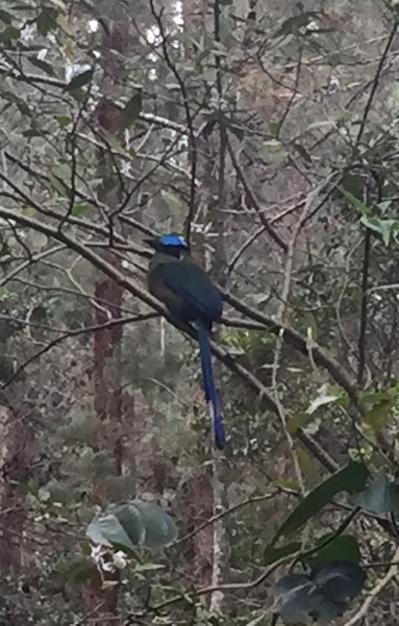
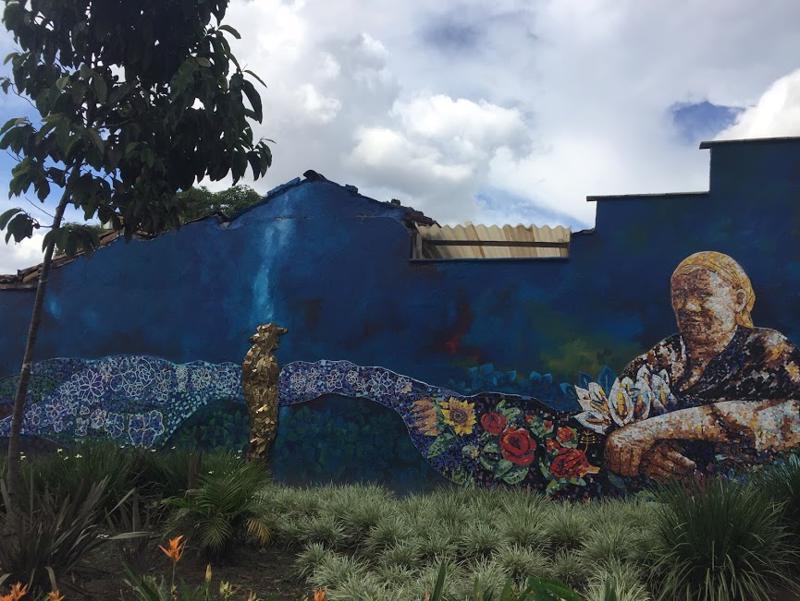
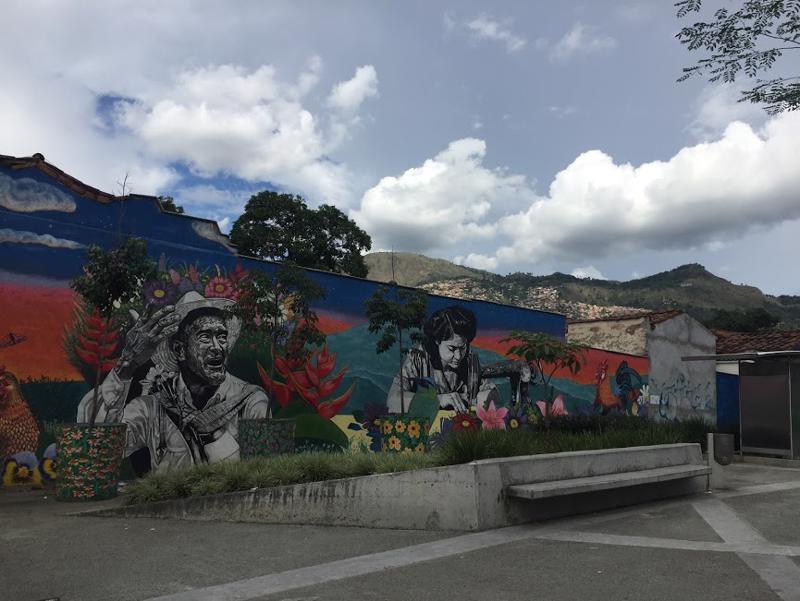
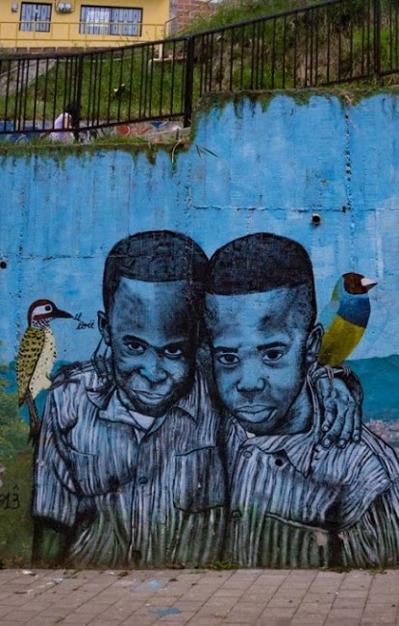
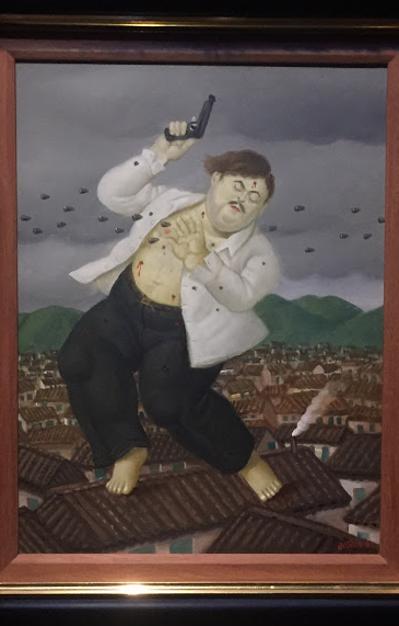
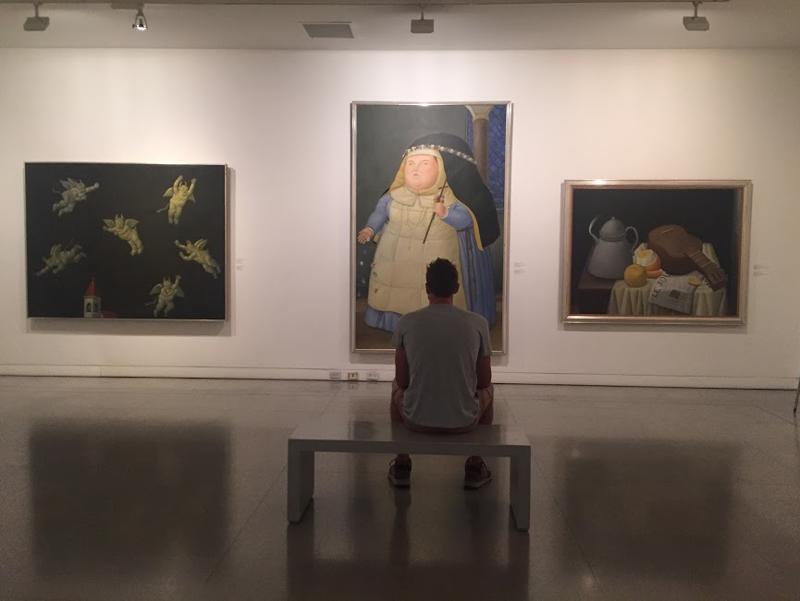
1.
The adventure ahead...
2.
In the beginning...
3.
And so the fun begins...
4.
Five Aussies in PDC...
5.
Lobster Galore...
6.
Grand Final ready...
7.
Killer Caves
8.
Unforgetable Antigua...
9.
Gettin' our locks off!
10.
We need a doctor...
11.
A stop over...
12.
An epic adventure...
13.
Oh, to fly like a bird
14.
A national gem...
15.
Moving forward...
16.
A fancy airport hotel
17.
Mr Attenborough did not lie, absolutely magical
18.
Like staying with family
19.
Amazing Amazon
20.
The Talent
21.
Markets, coffee and bagels
22.
All that flies
23.
Aussie Christmas in Cuenca
24.
Another hike, another detour
25.
On the road again... and again... and again
26.
The most breathtaking hike yet...
27.
A rainy hike with familar faces
28.
A giant unexplored city
29.
Functioning at new heights
30.
Hiking like the Inkas
31.
A necessary rest
32.
Living the floating island life
33.
The city of canyons and pizza
34.
Salt and Mirrors
35.
Tourists and atm lines
36.
Parks and wine
37.
We're not Hippies, we're Happies
38.
Super bowling
39.
Unexpected national park beauty
40.
Yep, thats right, we just climbed an ACTIVE volcano...
41.
The wrath of the I P A
42.
Our first taste of Patagonia
43.
El Chalten out of 10
44.
And that's just the tip of the iceberg...
45.
Don't cry for me Argentina
46.
Calling all travel gods...
47.
Marcia the Redeemer
48.
Reunited...
49.
Adventures with friends
50.
A hidden community with immense charm
51.
Beach bums
52.
The Final Four, what dreams are made of...
53.
Vegas baby
54.
The end of an epic adventure...
Share your travel adventures like this!
Create your own travel blog in one step
Share with friends and family to follow your journey
Easy set up, no technical knowledge needed and unlimited storage!